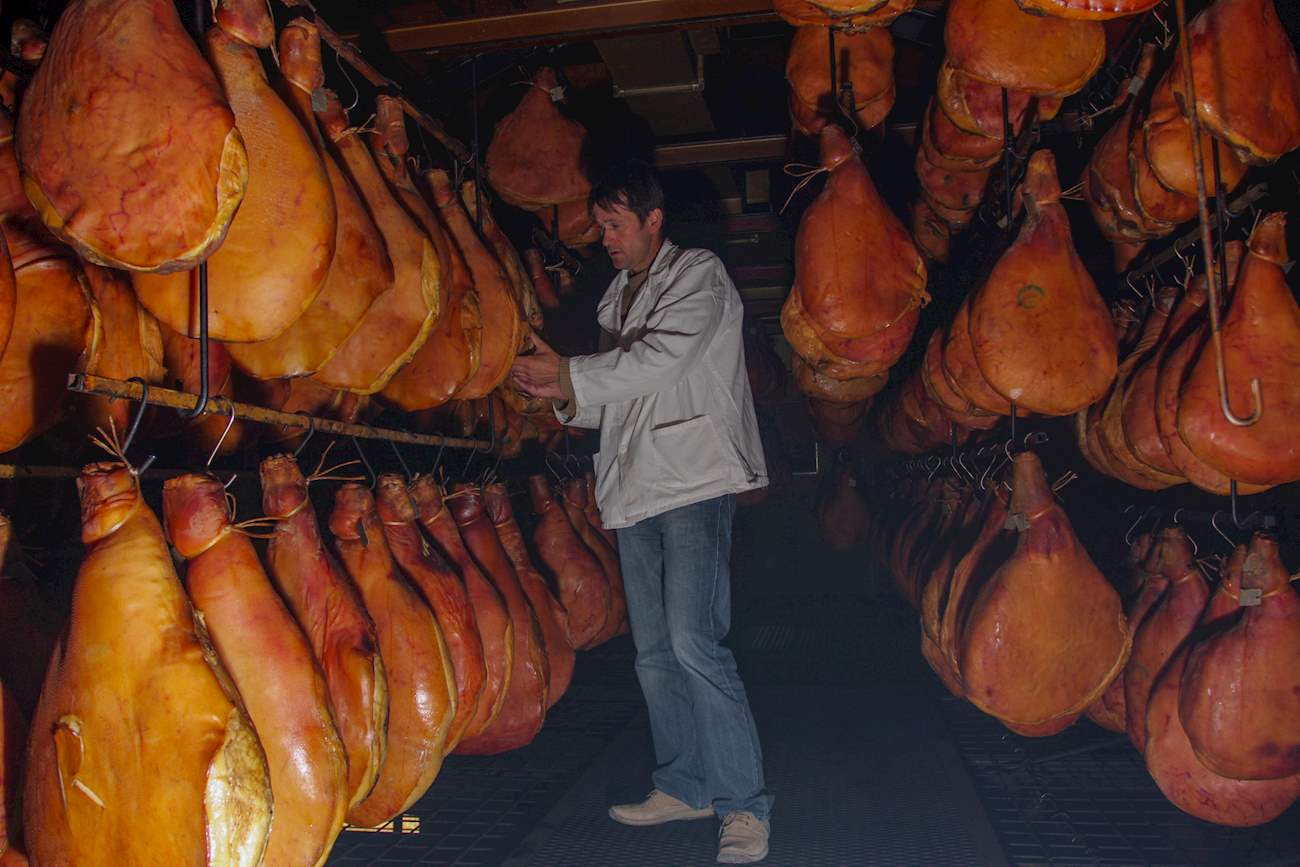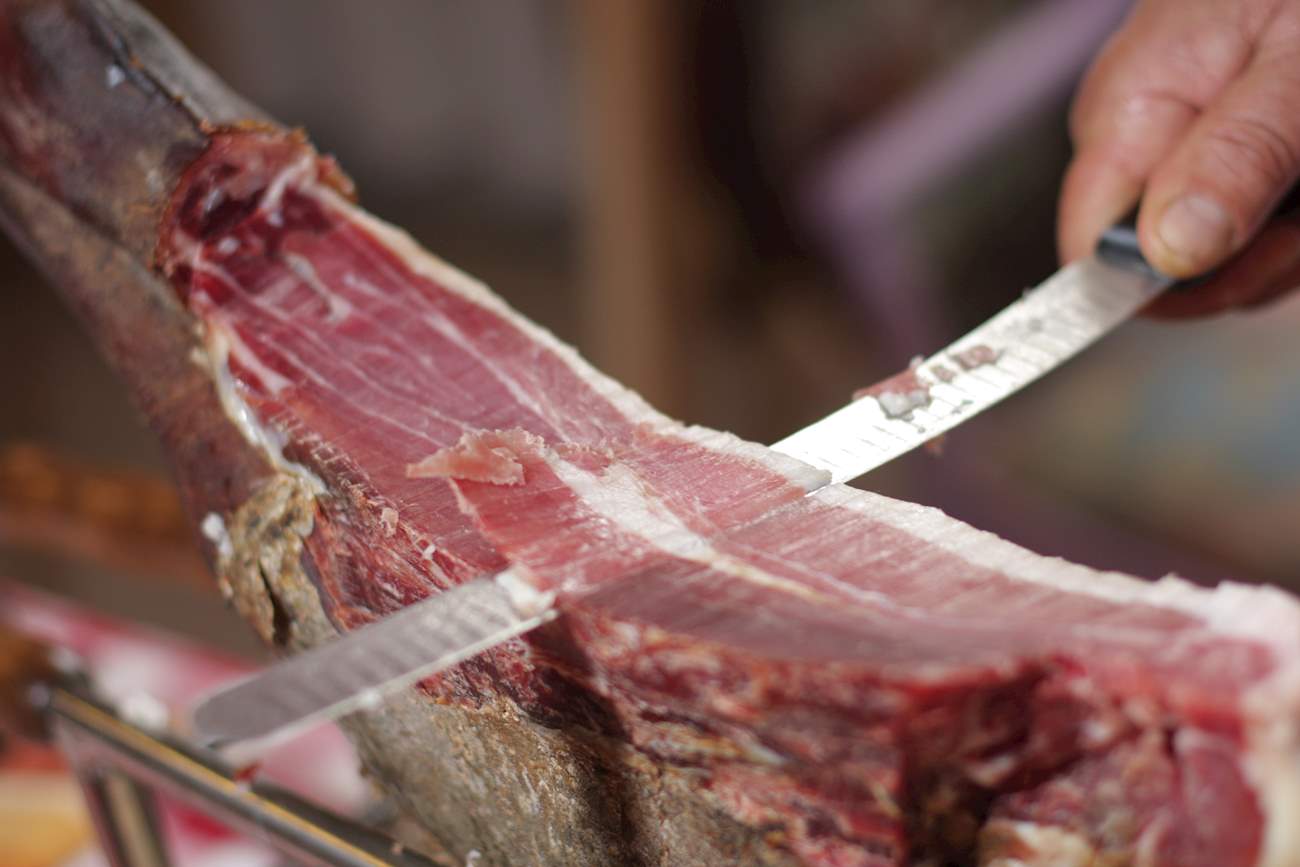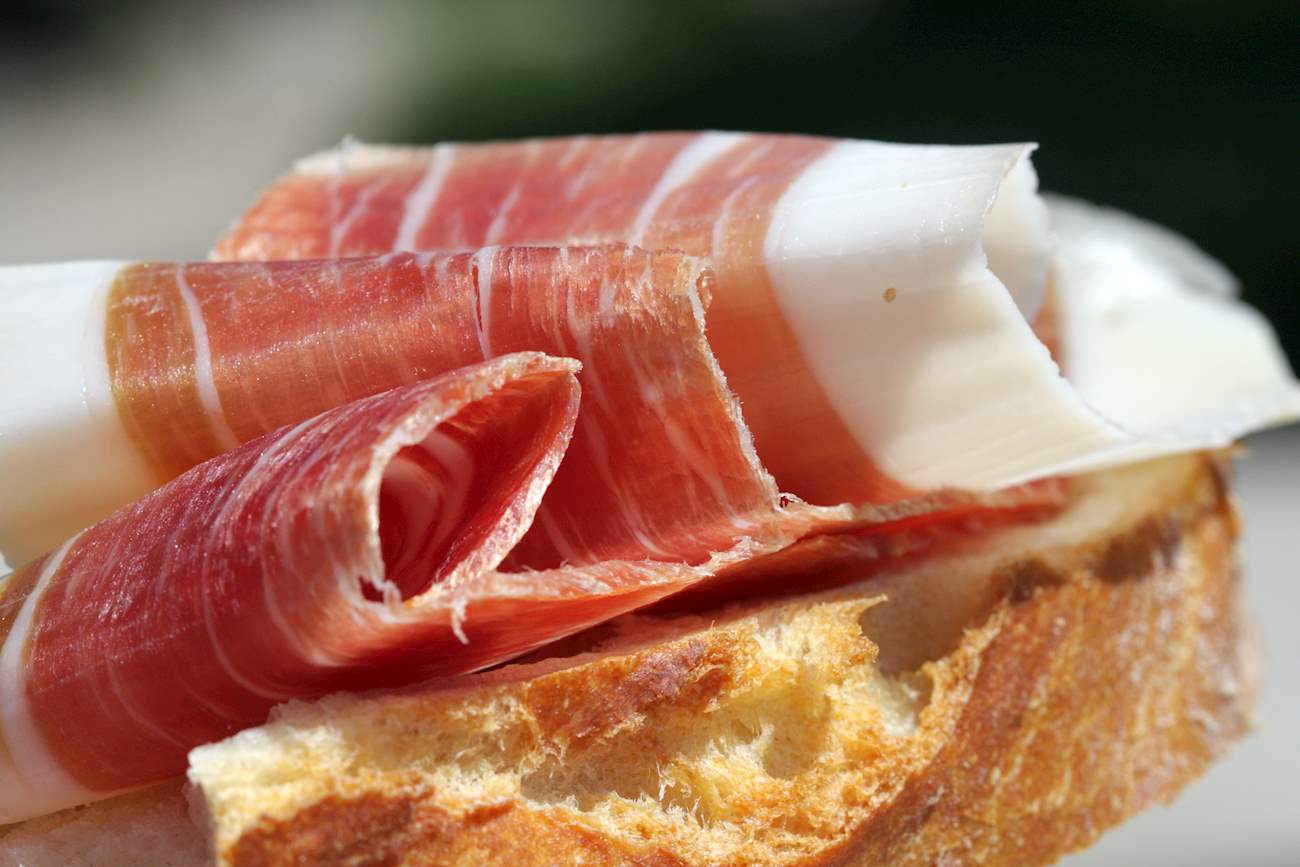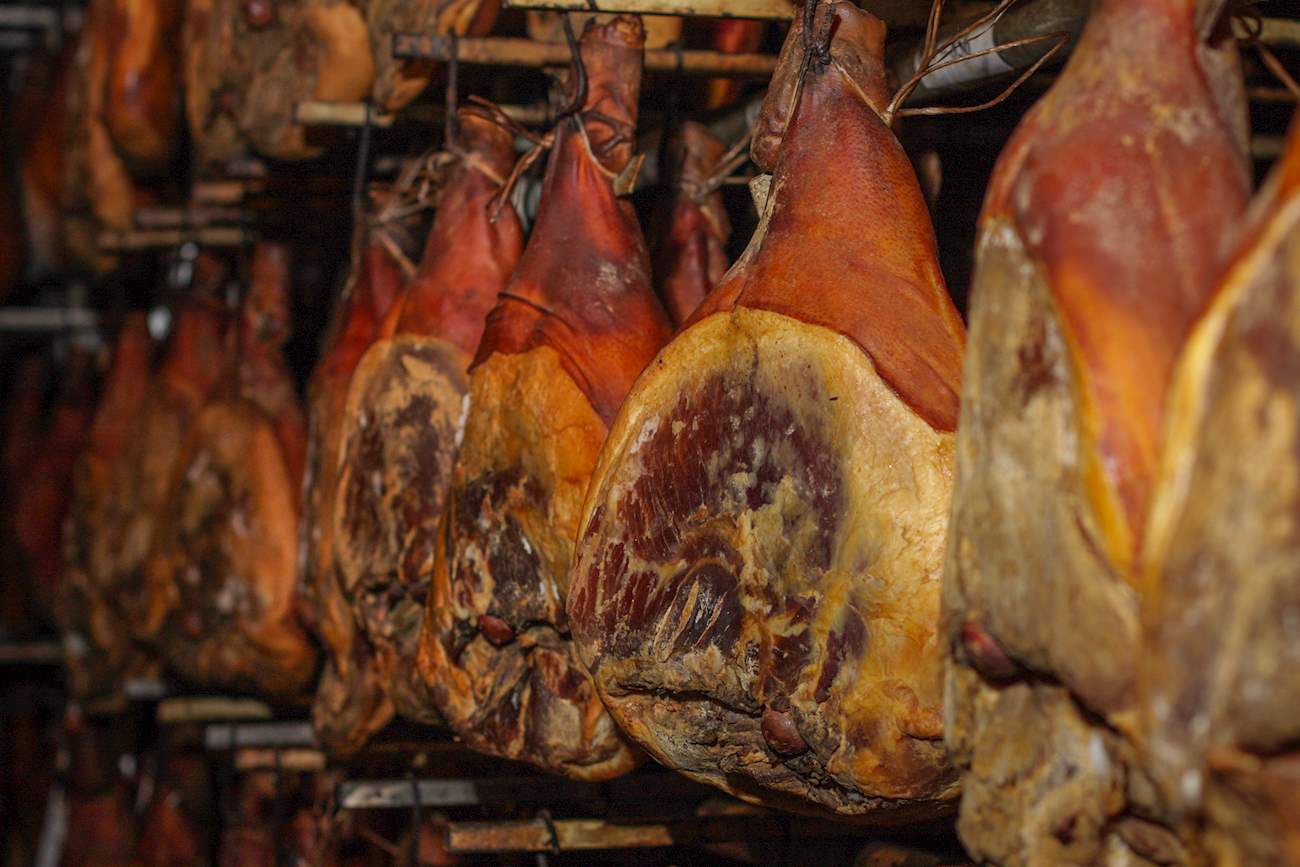Dalmatinski pršut
Dalmatinski pršut is a cured, smoked, and dried ham that is usually served thinly sliced alongside bread, cheese, or fruit such as melon. Unlike its Italian (prosciutto) and Istrian counterparts, the Dalmatian version of pršut is wood-smoked and dried for a minimum of twelve months.
It is produced with fresh pork legs, with the bone, skin and subcutaneous fat. After preparation, which includes dry-salting, pressing, and seasoning, it is smoked and left to dry and mature in the air. The final period is strongly influenced by the cold and dry Bora wind, which creates favorable conditions for maturation.
The combination of Mediterranean climate and traditional preparation techniques contribute to the exceptional quality of pršut, which is appreciated for its mildly smoky aroma, soft texture, and slightly salty taste.
Part of
Skradinski rižot
It takes about 10 to 12 hours to make this magnificent risotto that is traditionally prepared by men. Skradinski rižot is made with veal rump, a bit of ham, some beef,... Read more
Rezanci s pršutom
Rezanci s pršutom is a traditional pasta dish originating from Dalmatia. Although there are variations, the dish is usually made with a combination of pasta, local ... Read more
Pairing tips
Plavac mali
Plavac mali is a red grape variety that is indigenous to southern Croatian region of Dalmatia. A sibling to Primitivo and Zinfandel, and a descendant of Crljenak ... Read more
Babić
Babić is a native red Croatian grape that is mainly cultivated in central and northern Dalmatia and some Dalmatian islands, but the best expressions come from ... Read more
Pošip
Pošip is a native Croatian grape which was discovered by chance on the island of Korčula. Although it is cultivated in other Dalmatian regions, the grape ... Read more
Lasina
Lasina is a wine variety native to the Croatian region of Dalmatia. Often called Dalmatian Pinot Noir, this rare red grape is used in blends, typically with Babić ... Read more
Serve with
Kruh ispod peke
Kruh ispod peke is a traditional method of preparing bread under the lid (peka). The simple dough is prepared with flour, yeast, salt, and lukewarm water. It ... Read more
Livanjski sir
Modeled on the Swiss and French tradition of cheese production, livanjski sir was first produced in 1886, and it was initially made only with sheep’s milk.... Read more
Paški sir
Paški sir is a hard Croatian cheese originating from the island of Pag. The cheese is made from milk of the Pag sheep. The harsh bura... Read more





















